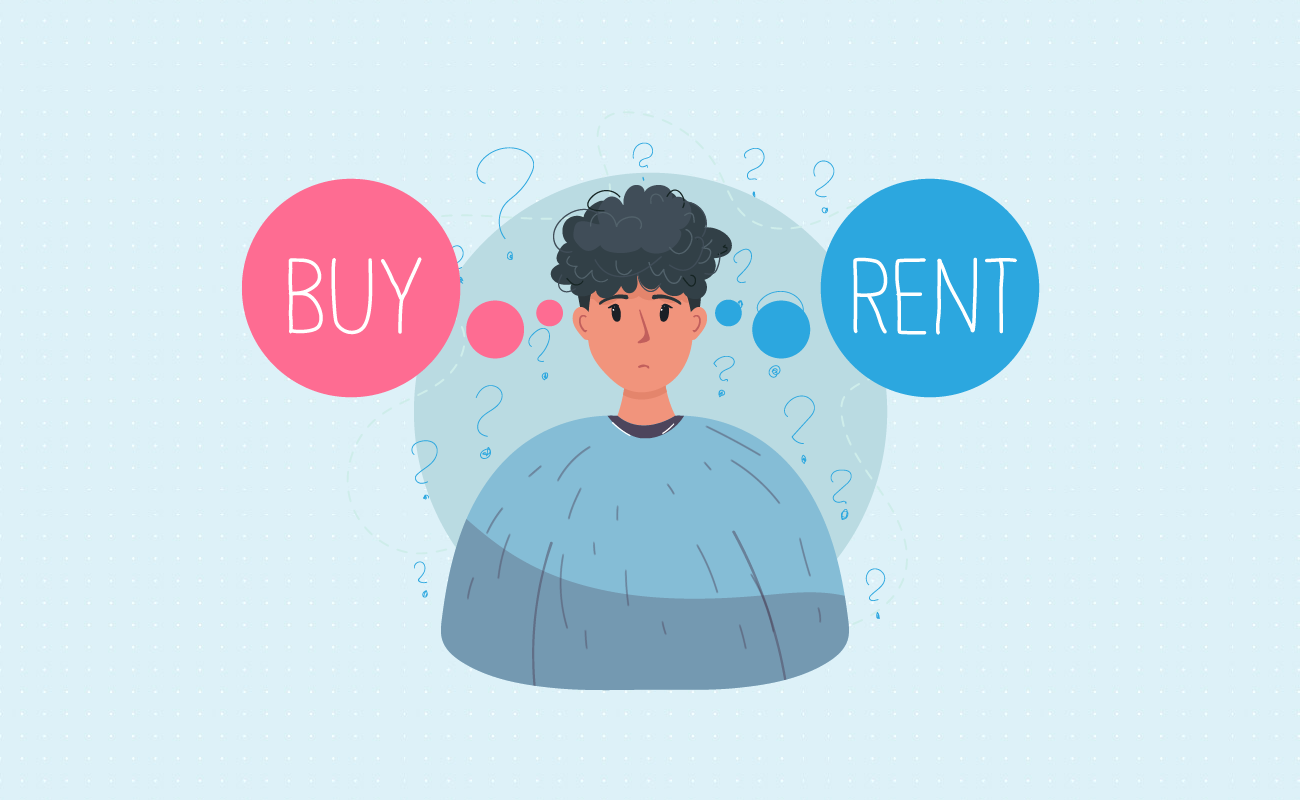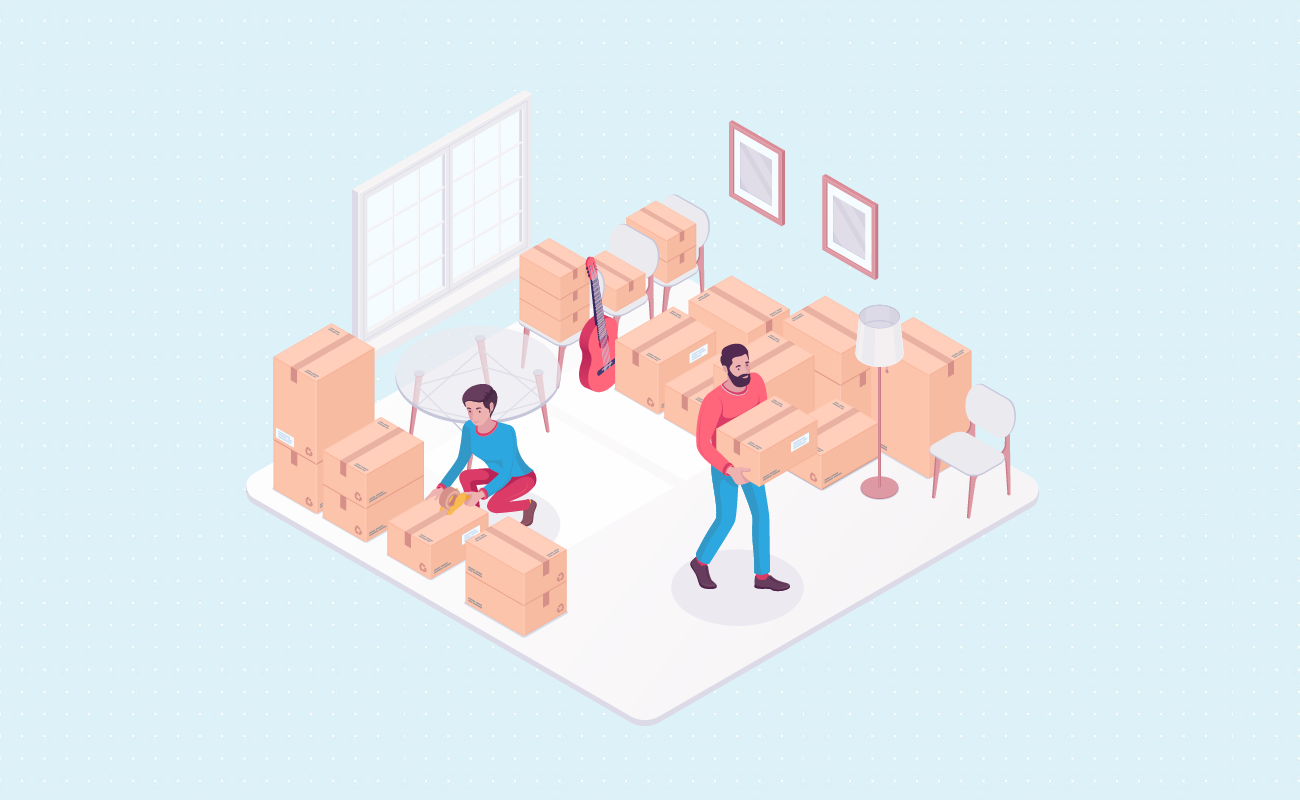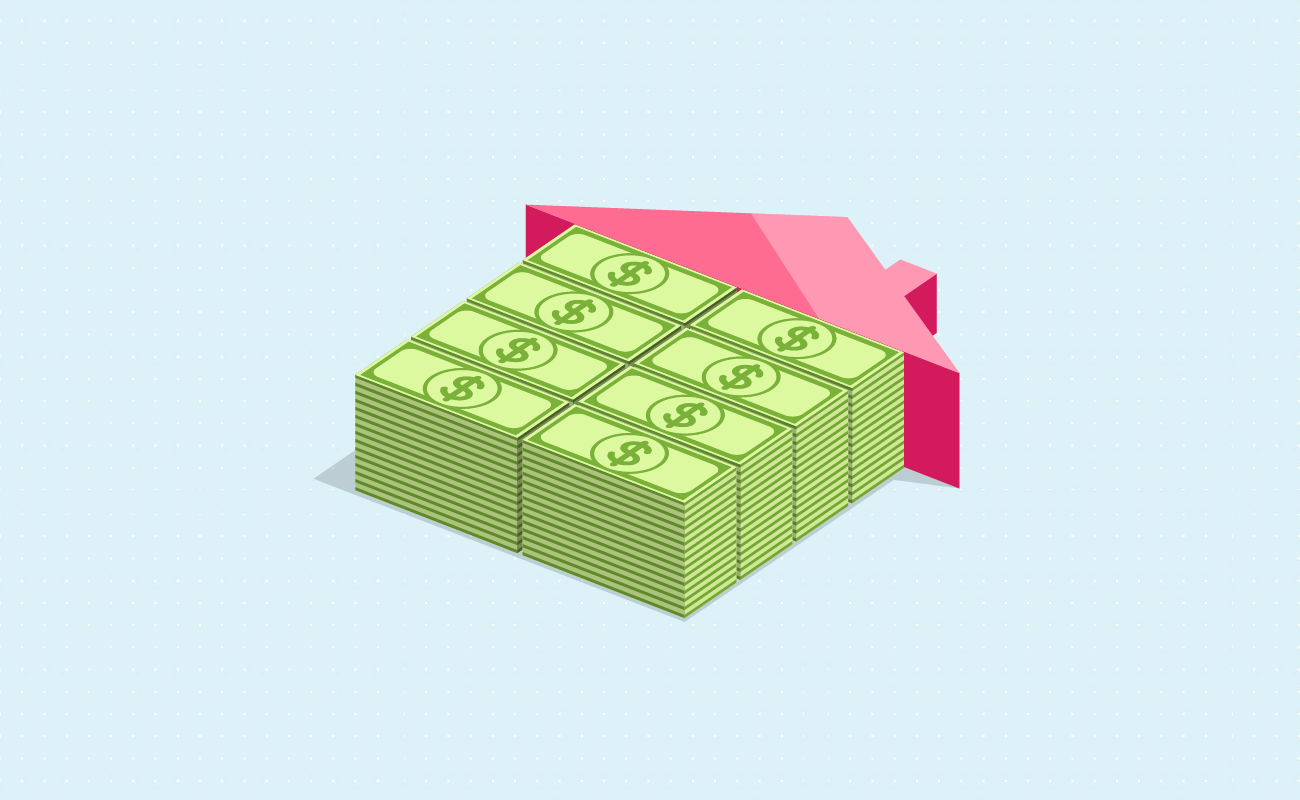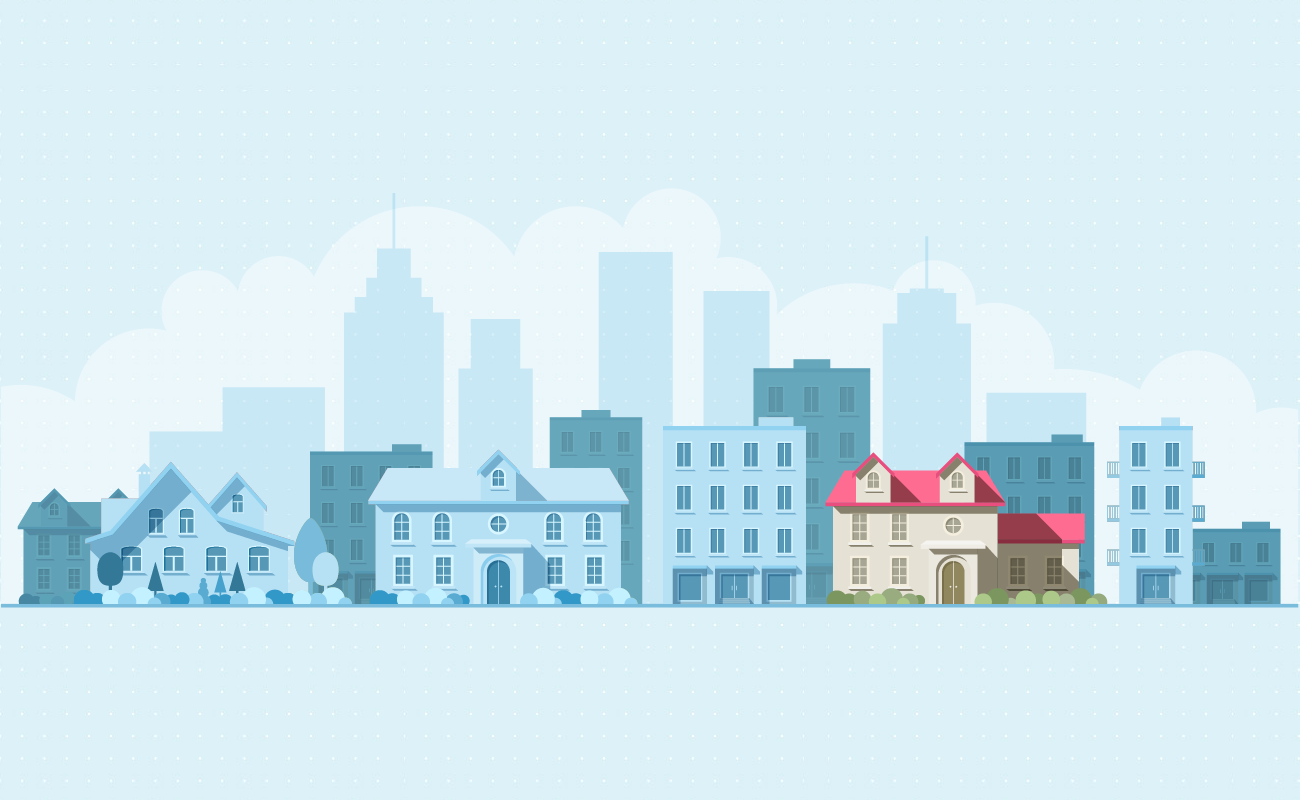Fixed Rates
30 yr
25 yr
20 yr
15 yr
10 yr
Compare Terms
Compare Rates
Real APR
Adjustable Rates
Qualification
Affordability
Renter Affordability
Rent vs Buy
Price per Square Foot
Jumbo
Home Sellers
 Rent vs Buy Calculator
Rent vs Buy CalculatorAre you unsure if it makes more sense to purchase a home or keep renting and invest your savings in other asset classes? Use this calculator to get a detailed estimate of which choice would be better from an economic perspective. Once you have completed your calculation you can click the PRINTABLE REPORT button to generate a detailed side-by-side comparison.
Guide published by Jose Abuyuan on November 3, 2020

To rent or to buy a house. It’s the age-old question you face at some point. Your decision is determined by your short-term and long-term plans. And depending on what stage in life you’re in, your financial stability will have a major impact on whether you’ll settle down or rent for the meantime.
Homeownership is a long-term commitment. Since mortgages usually last for 30 or 15 years, it’s chosen by people with a level of economic stability. Renting, on the other hand, provides flexibility and freedom to move. This is favorable if you’re anticipating life changes that require relocation. Renting can help you build significant savings for major life purchases.
Before you decide to rent or buy a house, it’s best to understand their costs. These depend on different factors such as monthly payments, how long you’ll stay in the property, and the geographic features of an area. And from an economic perspective, one choice can be more beneficial than the other.
Our guide will provide a detailed discussion on the costs of renting and purchasing a house. We’ll explain what type of areas typically have higher rent and mortgage payments, and why prices increase. For those looking to buy a house, we’ll discuss what’s a good purchase price in terms of the median income. We’ll also talk about a good home price relative to years of rental costs. Finally, we’ll rundown the pros and cons of each option to help you decide what works for you.
Though renting does not require as much financial responsibility, it’s important to understand rental prices and why they increase. The cost of rent varies per area and is largely affected by the national and local economy.
In Q2 of 2020, Rent.com reported that the average monthly rent in the U.S. for a studio apartment was $1,691. A single-bedroom unit had an average cost of $1,621 and a two-bedroom apartment had an average rent of $1,878. Lastly, a large 3-bedroom unit cost an average of $2,017 per month.
In contrast to the previous year, the average rent price for each apartment type rose in 2020, with studio units showing the largest increase at 5.36% year-over-year. Rent.com notes that because of the COVID-19 crisis, increase in rent from 2019 to 2020 is significantly higher than rent hikes between 2018 to 2019. The COVID-19 pandemic caused widespread job loss and mass rent payment problems. While landlords and renters struggled, rental costs fluctuated in 2020 and many renters who did not pay rent received extended unemployment benefits while landlords were prohibited from evicting them. Rental prices had disparate changes across regions as work from home arrangements made living in cramped quarters in expensive cities less enticing, particularly in the wake of lockdowns and social unrest, and the need for more space to work from home put a bid under single family homes with more space in them.
The biggest increase in rent was seen in two-bedroom apartments between March to April 2020. This indicated that renters in the low to middle-income bracket, people with small families and tenants with roommates, were most affected in the early months of the crisis. These renters faced the same problem between March to June, when the average rent for two-bedroom units rose close to 7% within 4 months. Manhattan vacancy rates jumped sharply with rents falling 10% year over year in July.
Major economic downturns aside, rent prices generally increase when there’s more demand. According to FortuneBuilders, when rent gets higher, fewer people are buying houses in an area. As consumers turn to the rental market to satisfy housing needs, it creates greater demand for rental properties. This enables landlords to increase the cost of rent, which can match national monthly mortgage prices.
Notice how certain locations impose higher rent? If you’re searching for an apartment in a busy metro area, rent is generally higher. Places with expensive rent are typically states with large populations and cities with more opportunities for job growth. Coastal states also have higher rent which charges a premium for the space. Besides high rent, coastal states also have higher monthly mortgage costs than the median national mortgage payment.
According to Rent.com, states with the most expensive rent are Massachusetts, District of Columbia (D.C.), and California. These three states have large populations and densely populated cities with high living costs. They also feature large companies and high-paying jobs that enable rental markets to sustain prices. Cities with high rental demand include San Francisco, Los Angeles, Boston, and Washington.
The following table lists the 2020 average rent in each U.S. state, from the most expensive average studio rent to the lowest:
| State | Studio Average Rent | 1BR Average Rent | 2BR Average Rent |
|---|---|---|---|
| MA | $2,476.12 | $2,644.07 | $3,120.45 |
| NY | $2,431.44 | $2,476.63 | $2,637.84 |
| CA | $2,403.94 | $2,559.61 | $3,175.54 |
| DC | $2,020.33 | $2,729.08 | $3,574.72 |
| NJ | $2,008.04 | $2,038.41 | $2,558.25 |
| VA | $1,835.89 | $1,793.27 | $2,092.80 |
| HI | $1,809.75 | $1,795.91 | $2,153.46 |
| WA | $1,791.66 | $2,155.07 | $2,237.66 |
| IL | $1,746.87 | $1,949.91 | $2,357.50 |
| FL | $1,665.98 | $1,629.97 | $1,853.80 |
| CO | $1,594.65 | $1,795.87 | $2,154.84 |
| RI | $1,555.42 | $1,893.35 | $2,427.56 |
| MD | $1,527.12 | $1,675.44 | $1,869.39 |
| GA | $1,458.42 | $1,351.87 | $1,614.23 |
| OR | $1,417.74 | $1,706.40 | $2,053.63 |
| CT | $1,387.09 | $1,642.01 | $2,036.84 |
| SC | $1,379.68 | $1,211.75 | $1,393.05 |
| PA | $1,371.91 | $1,640.09 | $2,018.79 |
| ME | $1,341.76 | $1,375.47 | $1,607.84 |
| TX | $1,334.93 | $1,271.46 | $1,576.46 |
| TN | $1,266.20 | $1,337.32 | $1,510.48 |
| MN | $1,261.37 | $1,376.11 | $1,667.98 |
| NC | $1,237.51 | $1,151.17 | $1,312.78 |
| NH | $1,191.42 | $1,631.61 | $1,824.32 |
| WI | $1,171.37 | $1,205.10 | $1,531.86 |
| UT | $1,155.07 | $1,267.42 | $1,499.36 |
| MI | $1,150.31 | $1,128.91 | $1,322.48 |
| KS | $1,144.10 | $1,030.91 | $1,075.80 |
| LA | $1,124.50 | $1,065.35 | $1,135.63 |
| DE | $1,106.56 | $1,255.80 | $1,442.02 |
| MO | $1,079.25 | $1,490.26 | $1,594.53 |
| AK | $1,065.00 | $679.74 | $1,266.60 |
| AZ | $1,037.02 | $1,317.31 | $1,613.10 |
| IN | $1,029.82 | $1,055.94 | $1,243.15 |
| OH | $997.61 | $1,109.14 | $1,365.99 |
| MT | $996.50 | $1,145.93 | $1,287.50 |
| ID | $950.79 | $1,137.25 | $1,189.15 |
| NV | $938.46 | $1,231.97 | $1,486.98 |
| KY | $910.53 | $1,064.94 | $1,234.36 |
| IA | $901.83 | $920.27 | $962.16 |
| NE | $821.34 | $1,001.97 | $1,207.59 |
| AL | $700.48 | $946.94 | $1,060.12 |
| NM | $697.28 | $967.75 | $1,191.74 |
| ND | $689.67 | $871.47 | $982.45 |
| OK | $681.36 | $712.82 | $904.55 |
| AR | $667.16 | $759.03 | $856.43 |
| WV | $0.00 | $1,170.67 | $1,227.53 |
| MS | N/A | $808.18 | $886.73 |
| SD | N/A | $727.40 | $893.39 |
| VT | N/A | $1,485.71 | $1,388.14 |
| WY | N/A | $697.53 | $884.47 |
As for the costliest average rent by city, Rent.com reported that the priciest locations were again places with high costs of living and those situated along coasts. In previous years, large and densely populated cities like San Francisco and New York dominated rankings. But in 2020, Rent.com reported that smaller resort cities took the highest spot. These are places where powerful business executives have chosen to reside.
In the top spot for studio apartments was Playa Vista, CA, a small but affluent region in Los Angeles with studio rent averaging over $4,000. It’s a luxurious location with a view near the beach, located near the airport and entertainment centers. Following Vista Playa were two cities in Massachusetts: Charlestown and Allston, which are Boston municipalities. Other cities known for their upscale rental status are Santa Monica, CA, Palm Beach, FL, and Port Chester, NY.
The table below ranks the most expensive average rental costs per city:
| Unit Type | City | Average Rent |
|---|---|---|
| Studio | Playa Vista, CA | $4,316 |
| Studio | Charlestown, MA | $3,662 |
| Studio | Allston, MA | $3,424 |
| 1 BR | Palm Beach, FL | $5,625 |
| 1 BR | Port Chester, NY | $4,748 |
| 1 BR | Santa Monica, CA | $4,682 |
| 2 BR | Santa Monica, CA | $7,519 |
| 2 BR | Woodbury, NY | $5,821 |
| 2 BR | West Hollywood, CA | $5,684 |
In contrast, places with cheap rent are usually states in the South, which have lower population density, older occupants, and smaller incomes. Because these locations do not feature large metro centers, demand for rental property is lower. These places are often less crowded counties and suburbs in designated rural areas.
According to the data, the least expensive state where you can rent is Arkansas, having the lowest average rent for studio apartments at $679.74 and two-bedroom units at $1,266.60. This is followed by Oklahoma with one-bedroom units that have an average rent of $681.36 and two-bedroom units at $904.55.
Finally, despite being a high-cost area, Alaska actually offers cheap rental apartments. Their rent has an average cost of $946.94 for a one-bedroom unit, and $1,266.60 for two-bedroom units. Alaska is known for their high-cost of living, with housing loan limits being 50 percent higher than the baseline loan limit for U.S. continental areas.

The main benefit of renting is flexibility. You can sign a lease for a couple of months and just renew it as often as you need. Renting is advantageous, for instance, if you’re gunning for a promotion which requires a big move. You’re not obligated to stay in one place. Home ownership is impractical if you’re still looking for a stable job or if your work requires you to move a lot.
The National Multifamily Council states that about 50 percent of renters are under 30 years of age. This makes sense for young people who are building careers and exploring opportunities to increase their income. If you’re planning to get married or have a small family, renting can give you enough time to save for a mortgage. On the other hand, some people choose to rent to reduce their expenses and manage their debts. This is a favorable option for single parents or individuals going through a financially challenging divorce.
Nationwide listing service Rentcafé reported that around 108.5 million people in 2018 rented in America. In 2019, renters account for around 34 percent of America’s general population. In a related survey, Statista notes that an estimated 43 million housing units in 2019 were occupied by renters in the U.S. They found that increasing renters coincided with a downward trend of residential vacancies throughout the country. The high demand for rental homes may be associated with the high cost of homeownership in various states.

Monthly rent is generally more affordable than mortgage payments, at least in the short-term. Even in expensive neighborhoods, renting may be cost-effective than homebuying. A mortgage actually requires added expenses besides monthly principal and interest payments. These include property taxes, home insurance, and home association fees. But if you rent, you don’t pay for any of these costs.
Furthermore, you don’t spend on maintenance expenses. These are usually shouldered by your landlord. Everything from plumbing inspections, heating and cooling maintenance, and electrical repairs significantly add to homeownership costs. According to HomeAdvisor, the average homeowner spends around $1,105 on regular home maintenance and $416 on emergency repairs annually. This gets more expensive depending on the size and features of your house.
On the downside, renting entails following your landlord’s house rules. Things like smoking or having pets might not be allowed in the property. And if you’re renting an apartment right next to other tenants, you might not get along with some of your neighbors.
Another drawback is lack of customization. Since it’s not your property, it doesn’t make sense to spend too much on new walls or expensive fixtures. If you decide to renovate with your landlord’s permission, the landlord benefits more in the long-term. On the other hand, remodeling your own house adds value to your property. If you decide to sell your house in the future, it will be more attractive to prospective buyers.
Furthermore, renting does not build home equity. The money you spent for rent could have gone to owning property. You get no tax benefits from a rent compared to taking a mortgage. And because of inflation, which increases rent by 3 percent annually, you’ll likely deal with higher rental costs for years to come.
In contrast, taking a fixed-rate mortgage means your monthly principal and interest payments stay the same. Though your property taxes or maintenance costs can increase, your core loan payments do not change. Finally, if your landlord suddenly decides to sell the property, you have no choice but to move again.
To summarize the pros and cons of renting, we created the table below:

| Pros | Cons |
|---|---|
| More affordable than a mortgage. You only spend on deposit, monthly payment, and the cost of moving. | Increasing rental costs. |
| Gives you flexibility to move. | If the landlord sells the property, you have to move. |
| Affordability provides time to build income. | You must follow house rules like no smoking, no pets allowed, etc. |
| The landlord takes care of maintenance and repair expenses. | If you have a poor credit record, you can be charged higher rent through an adverse report notice. |
| You don’t pay property taxes, homeowner’s insurance, or homeowner’s association fees. | Does not build home equity. You get no tax benefits from renting compared to buying a house. |

In September 2020, the median sales price of new houses sold was $326,800, according to the U.S. Census Bureau. House prices are usually more costly in cities with densely populated areas. Many people move to cities where there’s greater opportunity for job growth. And once they secure a stable career, many people choose to settle down permanently.
Home prices are also more expensive at coastal states, where the conforming loan limit is 50 percent higher than the baseline limit. These designated high-cost areas include the following U.S. territories outside the U.S. continental baseline: Hawaii, Alaska, Guam, and the U.S. Virgin Islands.
Why do house prices increase? When more people buy homes, there isn’t enough available property to satisfy the demand. The cost of housing, like any product or service, is driven by the law of supply and demand. When there aren’t enough houses, the prices go up. But of course, that’s just one way of looking at it.
According to Ecnmy.org, apart from large populations, reasons for increasing house prices may include low government investment or regulations that keep people from building in certain spaces. In other cases, a housing market may be controlled by a small number of property developers that deliberately keep prices high. Likewise, changing home prices are affected by economic downturns.
The COVID-19 crisis is unlike any recession we’ve experienced in the past. According to The Economist, in a normal recession, people lose jobs and incomes fall, and foreclosures usually pull house prices down. But in April 2020, the median home sales price in the U.S. increased by 4.7% compared to April 2019. And in May 2020, the median home sales price rose by 0.5% compared to May 2019.
The increase in prices is attributed to greater homebuying demand, which began in mid-April 2020. Mortgage rates fell to historic lows as the Federal Reserve continued to release housing data to support a low mortgage rate environment. This helped stimulate economic activity in housing markets, encouraging more people to buy homes or refinance their mortgage even during a crisis. Many wealthy people who lived in large cities bought second homes outside the city with more work space to escape lockdowns, unrest and have a better working environment with more space for a home office.
Aside from the national economy, the local economy affects mortgage rates. In general, rates are higher in areas where there’s high occurrence of foreclosure and job loss. Thus, it’s best to avoid buying in locations with high prevalence of foreclosures. Choosing areas with a lower rate will help maximize your interest savings.
In February 2020, ATTOM Data Solutions published a list of U.S. states with the most foreclosures. It showed the following states with the highest foreclosure filings:
Business Insider reported that the average mortgage payment was $1,275 for a 30-year fixed-rate mortgage, and $1,751 for a 15-year fixed-rate loan in 2018. This was based on data from the Bureau of Labor Statistics.
According the Census Bureau’s 2018 American Community Survey, the median cost of a mortgage was around $1,556 a month. The same survey also reported the median monthly mortgage payments per state. The top three states with the most expensive mortgage payments were New Jersey, Hawaii, and California. On the other hand, the most affordable states were West Virginia, Arkansas, and Indiana.
The following table shows the 2018 median monthly mortgage payments per state.
| State | Median Monthly Mortgage Payment |
|---|---|
| New Jersey | $2,439 |
| Hawaii | $2,350 |
| California | $2,282 |
| Massachusetts | $2,165 |
| New York | $2,114 |
| Connecticut | $2,096 |
| Maryland | $1,987 |
| New Hampshire | $1,917 |
| Alaska | $1,907 |
| Rhode Island | $1,838 |
| Washington | $1,826 |
| Virginia | $1,767 |
| Colorado | $1,681 |
| Illinois | $1,668 |
| Oregon | $1,647 |
| Vermont | $1,594 |
| Delaware | $1,563 |
| Texas | $1,549 |
| Minnesota | $1,547 |
| Utah | $1,497 |
| Pennsylvania | $1,474 |
| Nevada | $1,469 |
| Florida | $1,466 |
| Wyoming | $1,428 |
| Wisconsin | $1,418 |
| Arizona | $1,394 |
| North Dakota | $1,389 |
| Montana | $1,386 |
| Georgia | $1,383 |
| Maine | $1,381 |
| Nebraska | $1,352 |
| Kansas | $1,349 |
| South Dakota | $1,298 |
| North Carolina | $1,290 |
| Michigan | $1,279 |
| Ohio | $1,269 |
| Louisiana | $1,267 |
| New Mexico | $1,262 |
| Missouri | $1,254 |
| Iowa | $1,234 |
| Idaho | $1,228 |
| South Carolina | $1,227 |
| Tennessee | $1,224 |
| Oklahoma | $1,214 |
| Kentucky | $1,158 |
| Alabama | $1,147 |
| Mississippi | $1,134 |
| Indiana | $1,130 |
| Arkansas | $1,071 |
| West Virginia | $1,023 |
Next, the following table lists the top 2018 U.S. cities with large populations that have the most expensive median mortgage payments. Among them are New York, Los Angeles, Riverside County, and Chicago. Again, cities with huge populations that offer plenty of job opportunities typically have costly mortgage payments.
| City | Median Monthly Mortgage Payment | Median home Cost |
|---|---|---|
| New York City, NY | $2,709 | $460,900 |
| Los Angeles, CA | $2,573 | $658,600 |
| Riverside County, CA | $1,900 | $380,800 |
| Chicago, IL | $1,847 | $256,700 |
| Miami, FL | $1,810 | $317,800 |
| Dallas, TX | $1,779 | $258,300 |
| Houston, TX | $1,727 | $225,200 |
| Phoenix, AZ | $1,492 | $277,900 |
What’s a good purchase price for a home in terms of median income?
Historically, home prices in the U.S. cost around 3 times the median income. According to Bloomberg in 2018, this used to be the rule of thumb: If the home’s price is equivalent to 2.6 years of your household income, you should be able to afford a house. The ratio is based on historical nationwide averages for thriving economic markets.
In recent years however, home prices—especially property in coastal cities such as California, Boston, New York, and Washington—have become increasingly expensive. The report notes that saving 2.6 years of your income will no longer suffice if you plan to buy a home.
Bloomberg’s 2018 chart below is based on the median income and Zillow’s median housing values. It shows the equivalent years of household income you must save to afford a property in the following high-cost metro areas:
| Metro | Years of Median Income to Buy Median Home |
|---|---|
| Los Angeles | 9.6 |
| San Jose | 9.5 |
| San Francisco | 9.2 |
| San Diego | 7.9 |
| Honolulu | 7.6 |
| Ventura, CA | 7.2 |
| Sacramento | 5.9 |
| Stockton, CA | 5.9 |
| Riverside, CA | 5.9 |
| Portland | 5.6 |
| Seattle | 5.6 |
| New York | 5.4 |
| Fresno, CA | 5.4 |
| Denver | 5.4 |
| Boston | 5.2 |
| Miami | 5.0 |
| Sarasota, FL | 4.5 |
| Stamford, CT | 4.5 |
| Las Vegas | 4.5 |
| Salt Lake City | 4.5 |
Based on the figures above, the least affordable metro area was Los Angeles where it takes almost 10 years to buy a house based on the median household income. This is followed Bay Area metros, San Jose and San Francisco, where it can take over 9 years to save for a house.
In 2020, the median household income in the U.S. was $68,400 according to DQYDJ. Now, if you’re purchasing a house worth 2.6 years of your household income, you’re looking at a home priced at $177,840. This is a minuscule sum, which is obviously not enough. It also shows how incomes have not kept pace with the rising cost of property.
The median sales price of houses sold in September 2020 was $326,800. If your household income is $68,400 and you’re buying a home priced at $326,800, you should save around 4.7 years of your household income. In reality, you may have a larger income than the median national average. But of course, if you’re purchasing a house in an expensive neighborhood, you’ll need to build more savings to buy a house.

What’s a good home price in terms of years of mortgage payments?
You can estimate the price of a home based on your monthly rent. To do this, you must multiply your monthly rent payments by 200. This figure is based on the number of payments you’ll make within 16 years and three months. The resulting amount provides a good estimate of the home price you can afford. If your rent is expensive enough, the result may be close to median home prices in your area. If this happens, it likely time to buy a house.
For example, suppose your rent costs $1,691. Within 16 years and three months, this would amount to $338,200. This figure is actually a little over the median sales price in September 2020.
= $1,500 x 200
= $338,200
In around 16 years, you could have spent $338,200 in mortgage payments. Consider buying a house especially if you plan to live long-term in the same area. Renting too long squanders the opportunity to build home equity and own your own property.
Besides monthly mortgage payments, you need to prepare a substantial down payment. This is an upfront cost that requires a percentage of your home’s price. Financial experts recommend paying 20 percent down on your home’s value. This eliminates private mortgage insurance (PMI) when you obtain a conventional loan.
For instance, if you’re buying a house priced at $350,000, you should save $70,000 for a down payment. This is a large sum, which also indicates you have a strong cash flow. Making a high down payment reduces credit risk for lenders, making you look like a more creditworthy borrower. Furthermore, paying 20 percent down helps reduce your interest rate and significantly decreases your monthly mortgage payments.
However, in reality, most people cannot afford 20 percent down. If you’re a first-time homebuyer, you likely have limited funds. Experian reported that in 2018, American homebuyers only made a median down payment of 13 percent. Meanwhile, first-time homebuyers spent 7 percent down, and repeat buyers only spent 16 percent down on a mortgage.

Down payment requirements vary per lender. Though it depends on the strength of your credit profile, many conventional mortgage lenders allow a minimum down payment of 5%. If you qualify for a government-backed loan, such as an FHA loan, you can take advantage of 3.5% down. Other government-sponsored loans such as VA and USDA loans come with a zero down option (100% financing).
Next, don’t forget to include your closing costs. Closing costs are fees charged by your lender to process your mortgage. This generally ranges between 2 percent to 5 percent of the loan amount. For example, let’s say your loan is worth $300,000. This means your closing costs will be around $6,000 to $15,000. Be sure to set aside extra money to cover this expense.
Lastly, you must commit to more financial responsibilities. Your mortgage expenses don’t end with monthly principal and interest payments. You must also factor in the following housing costs:

Besides finally having a place of your own, the most significant advantage of homeownership is long-term savings. Renting gets more costly with time. You end you spending for an apartment that you’ll never own. Likewise, your rent is bound to increase. But if you take a fixed-rate mortgage, your monthly payment should remain within an affordable range. And as we’ve mentioned above, you’re better off spending monthly payments on your mortgage in the long-term.
Once you can afford it, it’s better to purchase a home and build equity. Equity is basically how much you owe on your mortgage minus your home’s current market value. When you build home equity, every payment you make goes toward owning your home.
You can leverage home equity to finance home improvement projects with a second mortgage. You can use a home equity loan or HELOC to pay for your child’s college education. In some cases, you can even use a second mortgage to consolidate high-interest debts into a lower rate. Just make sure you can manage your payments. It’s risky to consolidate debt with your home as collateral.
Are you ready to buy a house? Homeownership is ideal for people who have achieved a level of financial stability. If you’ve built enough income, have job security, and a good credit score, then you should probably start thinking about homeownership. Buying your own property becomes a necessity when you have a growing family. You’ll certainly need more space for a more comfortable home life.
However, if you’re not ready to stay long-term in a home, homebuying is not a practical choice. Don’t buy a house if you’re moving in just a few years. As we’ve discussed, it entails a lot of financial commitment. Before getting a mortgage, take the time to build savings and get your finances in order. In the long-run, all your efforts will be worth it.
The following table summarizes the pros and cons of homeownership:

| Pros | Cons |
|---|---|
| Buying a house allows you to build equity and improve your credit. | Requires a large down payment, 3%-20% of the home’s price. |
| When you get a fixed-rate mortgage, it locks in monthly principal and interest payments. | Has other fees on top of mortgage payments such as property taxes, insurance, etc. |
| Receive potential tax benefits. | You must spend time and money to maintain the property. |
| Advantage from real estate appreciation. | No more flexibility to move. |
| No landlord or rules. You can decorate or renovate your property. | Homes are illiquid assets with high transaction fees (Realtor commissions, appraisals, loan approvals, etc.) |
If you want to estimate the difference between renting and buying a house, use our calculator above. To compare the costs, you must include the monthly payments, annual inflation, and how long you intend to stay in the house.
Let’s say you’re current monthly rent is $1,500, with a monthly insurance fee of $30, and annual rent inflation of 3 percent. You qualified for a 30-year fixed-rate loan at 3 percent APR. To bypass private mortgage insurance, you intend to pay $70,000, which is a 20 percent down payment.
Now, suppose you want to stay in the house for at least 10 years. The expected yearly appreciation rate of your house is 3 percent, while the rate of return (APY) of the money is 2 percent if you invested in a different asset. The realtor commission is 6 percent.
Finally, to factor in closing costs, you purchased a 1 percent discount point and paid 1 percent for origination fees. Your other homeownership costs are as follows:
To know if renting or buying is more affordable, see the results below:
| Total Estimated Cost | Amount |
|---|---|
| Renting | $193,329.79 |
| Buying | $98,341.73 |
Based on the table, buying would cost you $98,341.73 over 10 years, while renting would cost you $193,329.79. In this example, you’ll save $94,988 more if you buy a house instead of rent in the next 10 years. Under these conditions, it’s more practical to purchase a home than to rent an apartment.

Renting and buying a house both have unique advantages. On one hand, renting allows you to move as your career goals advance. Affordable rent gives you time to save money and prepare for major purchases. Renting in areas away from the city also have cheaper monthly payments.
On the other hand, homeownership allows you to save more on payments. While rent tends to increase over time, fixed-rate mortgages have monthly payments that remain within an affordable range. Once you gain enough home equity, you can leverage it to finance renovations. You can also borrow against home equity to fund your child’s college education in the future.
Finally, most people eventually decide to buy a house. If you’re serious about homeownership, you should start arranging your finances today. Begin by improving your credit score, saving enough down payment, and increasing your cash flow. Paying your bills on time and reducing your debts will also help improve your credit score.
For more information on how to qualify for a loan, read our guide on our mortgage qualifier calculator.
Jose Abuyuan is a web content writer, fictionist, and digital artist hailing from Las Piñas City. He is a graduate of Communication and Media Studies at San Beda College Alabang, who took his internship in the weekly news magazine the Philippines Graphic. He has authored works professionally for over a decade.